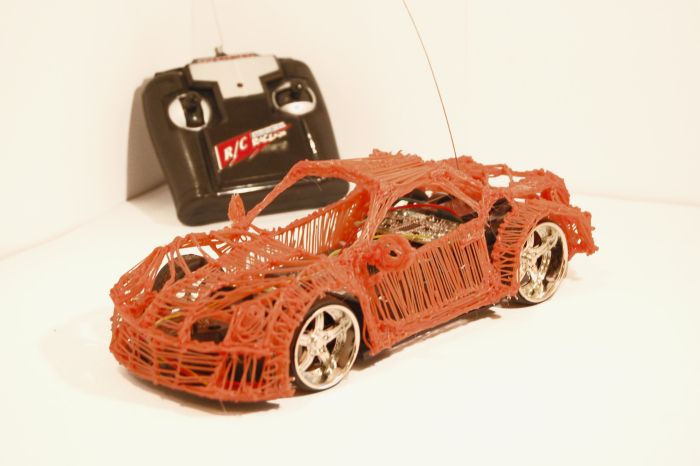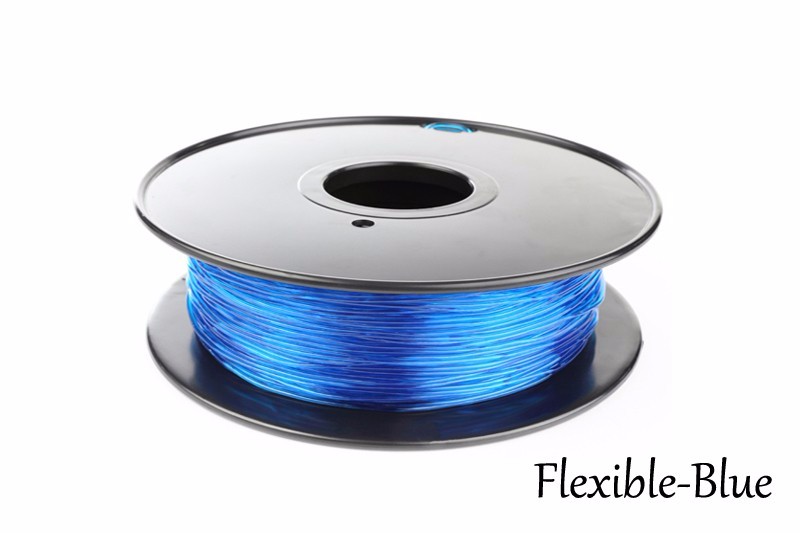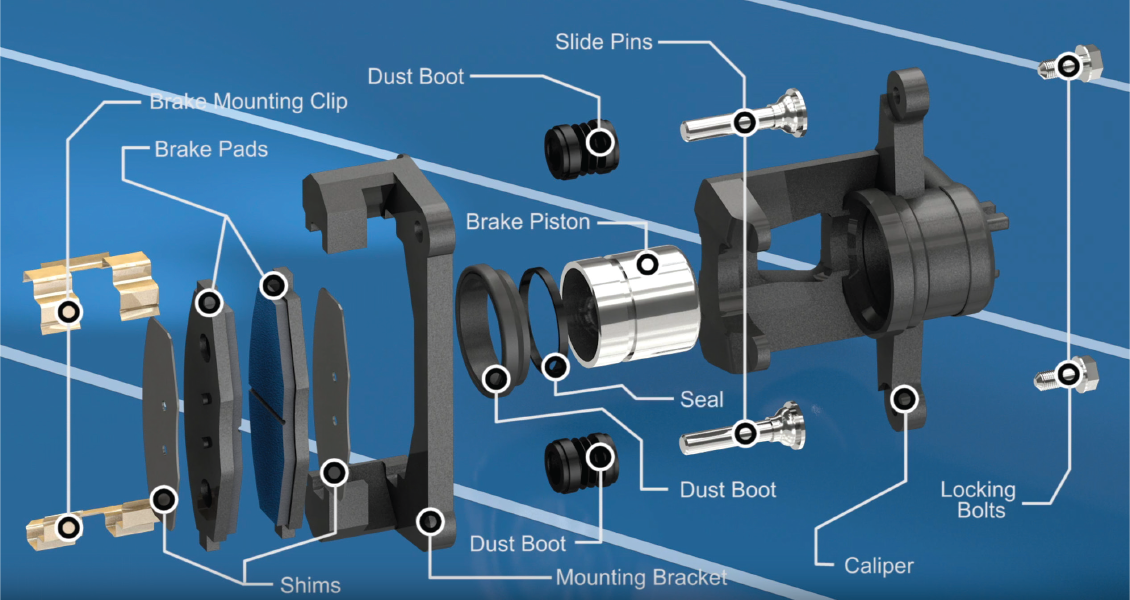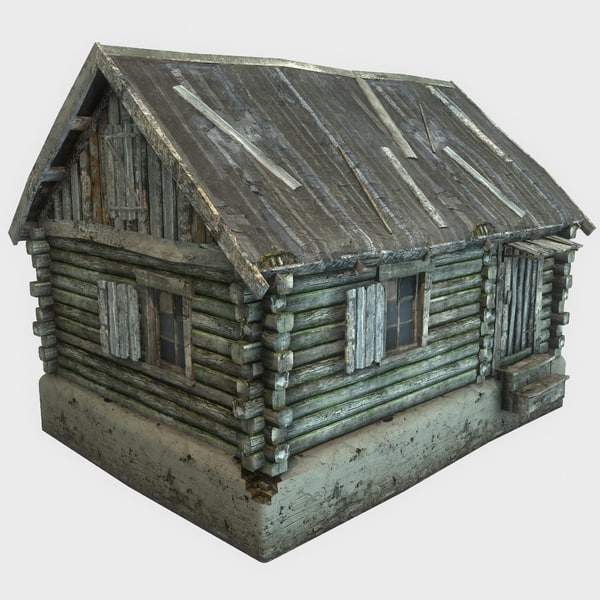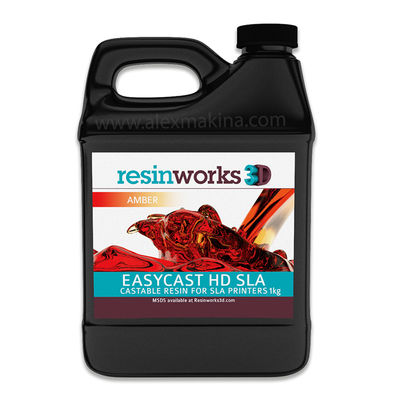3D printers ces
The 3D Printing Innovations at CES 2020!
Published on January 10, 2020 by Carlota V.
CES, the largest electronics trade show dedicated to consumers brings thousands of participants to Las Vegas every year, eager to discover the latest high-tech products, connected objects and all kinds of technologies. In 2019, the event attracted more than 175,000 international visitors and 4,400 exhibitors. This year, CES 2020 opened its doors on January 7, and gathered as always many curious visitors. A number of players in the 3D printing industry came to present their products, an opportunity for us to take a look at some new 3D printers, applications and innovative materials.
CES 2020 brought together 76 exhibitors specializing in the additive manufacturing sector (compared to 79 last year), including manufacturers of 3D printers such as Formlabs, Markforged, Global 3D Systems and 3D scanner manufacturers such as Artec3D.
Snapmaker is one of the 3D printing exhibitors at CES 2020
New 3D printers presented at CES 2020
Every year the manufacturer XYZprinting takes advantage of the international event to unveil one or more desktop 3D printers. This year, it unveiled for the first time the da Vinci Color 5D, an extrusion 3D printer that also offers laser engraving and 2D printing on paper. Based on the da Vinci Color mini model, it can print colour parts up to 230 × 180 × 180 mm using a combination of FDM and Inkjet technologies. Fernando Hernandez, EMEA Marketing Director of XZYprinting, added: “The da Vinci Color 5D can be used by a wide range of people, but will be particularly useful to small businesses and designers, thanks to its high quality printing and ease of use. The 2D printing and laser engraving capabilities make the da Vinci Color 5D a world first and the most comprehensive and user-friendly desktop 3D printer ever developed. Entrepreneurs and manufacturers will truly have the ability to bring their creations to life.”
On the hybrid side, Snapmaker has introduced a new version of its famous 3-in-1 printer that combines a 3D printer, laser engraver and CNC milling machine. The Snapmaker 2.0 is equipped with CAN data bus extension that makes it easier to transmit information wirelessly.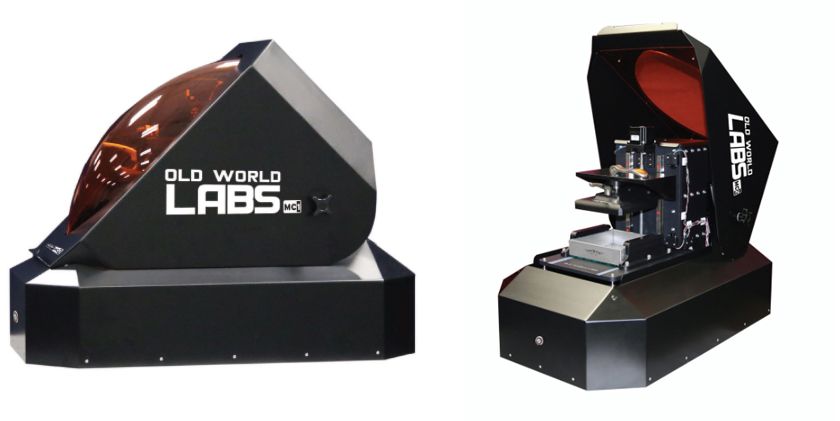
The da Vinci Color 5D 3D printer from XYZprinting
Finally, the French manufacturer Volumic presented its STREAM ULTRA SC machine, which won two CES awards: one for the 3D printing category and the other for sustainability and eco-design.
On the 3D scanner side, the Canadian manufacturer peel 3D unveiled peel 2 CAD, a professional and portable 3D scanner that allows to digitize an object easily and send it to an adapted CAD software. The company says: “Peel 2 CAD makes it easy to set up and perform 3D scans with CAD software. Thanks to this new solution, users can reduce the time spent processing scanned files and spend more time on innovative projects or higher value-added tasks“.
Some innovative applications presented at CES
The Swiss car manufacturer Rinspeed took advantage of the event to unveil its electric and autonomous concept car, MetroSnap. It is a modular car thanks to interchangeable cabins, called Pods, that the user can easily mount on the unique chassis, called Skateboard. Of course, we were curious about the 3D printing side of things: the manufacturer used Stratasys’ FDM and PolyJet technologies to design about thirty exterior and interior parts. These include the license plate, display frames and power sockets.
Of course, we were curious about the 3D printing side of things: the manufacturer used Stratasys’ FDM and PolyJet technologies to design about thirty exterior and interior parts. These include the license plate, display frames and power sockets.
In the cosmetics sector, the South Korean company Amore Pacific has developed a system for 3D printing facial masks, customized according to the user’s skin type. The company is said to have designed a specific multi-material machine, dedicated to the creation of this hydrogel mask. An innovation that reminds us of the one launched by Neutrogena a year earlier.
The concept car integrates about thirty 3D printed parts | Credits: Stratasys
Of course, we can’t mention all the new 3D printing features of CES 2020 nor list all the interesting applications hidden in the aisles. We invite you to visit the event’s website to find out more!
What did you think of CES 2020? Let us know in a comment below or on our Facebook and Twitter pages! Sign up for our free weekly Newsletter, all the latest news in 3D printing straight to your inbox!
Who's 3D Printing At CES 2021? « Fabbaloo
By Kerry Stevenson on January 6th, 2021 in Event
Tags: 3ditext, anycubic, biqu, ces, consumer, creality, exhibition, formlabs, kallion, raise3D, snapmaker, uniz, yidimu
CES 2021 is coming up next week, and I wondered if any 3D printing companies are still exhibiting at that event.
CES, the Consumer Electronics Show, is the world’s largest gadget event, where tens of thousands of exhibitors display their products the crowds upwards of 200,000 individuals.
Or at least that’s how it used to be.
This year CES has “gone digital”, like so many other in-person events. It’s the first time for CES, as last year’s event, which we did not attend, took place just before the — well, when things happened.
Fabbaloo used to regularly attend this event, as it was one of the premiere venues for new 3D printing announcements. That’s because in the early 2010s MakerBot decided their 3D printers were “consumer devices” and thus this show was an appropriate platform for announcements.
Their presence rapidly attracted a number of other 3D printing companies who sought to gain the attention of the same media MakerBot worked with. At one point there were certainly well over 100 3D print exhibitors, so many that CES granted the technology its own section in the innovation hall.
However, after MakerBot’s sale to Stratasys their interest in the show faded, and they disappeared. Subsequently the number of 3D print participants dropped significantly, and the last year we attended, 2018, there were only two dozen exhibitors of interest. We have not attended since, and CES has even relegated the few remaining exhibitors to the back of one of the older halls, very far from the “innovation” areas. It’s not a good place to exhibit 3D printers anymore.
In spite of those circumstances, several companies persist in exhibiting at CES. While we are not planning on attending, I was curious to know which 3D print organizations are still exhibiting at the show in 2021.
I wandered through CES’s not-particulary-easy website and found their exhibitor directory, which lists the presumably thousands of exhibitors that will portray their offerings digitally this year. While the search function was pretty terrible, I managed to identify a short list of 3D print companies at CES 2021.
Creality is exhibiting, no doubt showing off their new belt 3D printer, the 3DPrintMill / CR-30. It may be they hope it could become a consumer item, or perhaps be noticed by mass media as an unusual product to feature.
SnapMaker multi-function device [Source: SnapMaker]SnapMaker has been at CES previously, and they return again. They produce a modular device that is a 3D printer, laser engraver and CNC mill all in one unit.
The UNIZ IBEE 3D printer [Source: UNIZ]UNIZ was a company we first saw at CES some years ago when they launched their very speedy resin 3D printer line.
Formlabs has always been at CES since I first met them way back in 2013.
The Photon Mono X resin 3D printer [Source: Anycubic]Anycubic produces a line of low-cost resin and FFF 3D printers.
Raise3D’s professional series of 3D printers are able to use many different engineering materials, and they offer a sophisticated cloud platform from which to run them.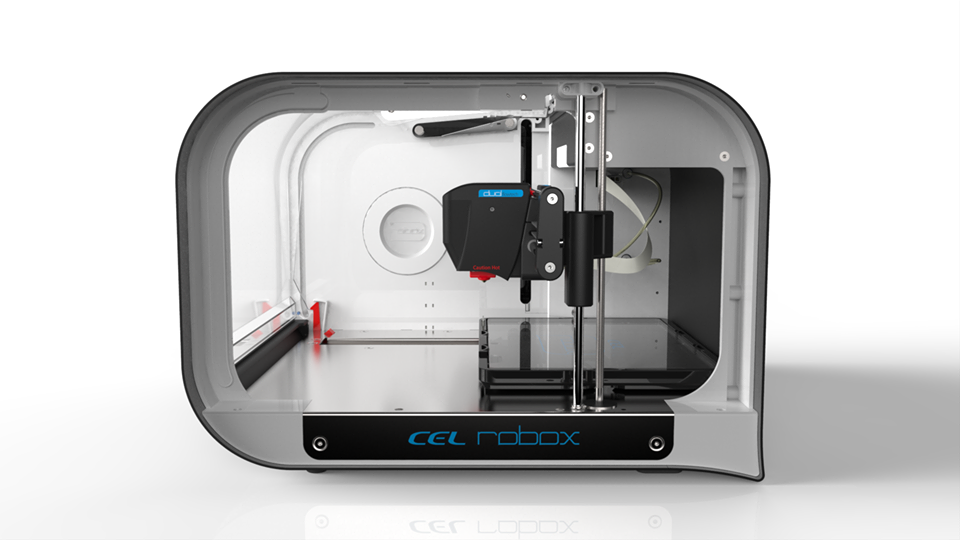
BIQU is perhaps best known for their 3D printer components, but they also produce 3D printers of their own.
Yidimu produces the Falcon series of resin 3D printers.
3D scanner [Source: Kallion]Kallion is a company I’m not familiar with, but they produce a one-click 3D scanning solution.
3DiTEX is a French company that apparently has a device that can produce 3D textiles in different materials. I’ll be investigating them further.
That’s all I found so far: only ten related companies. This seems to continue the downward trend of 3D print’s appearance at CES.
However, this year the event is entirely online and it’s possible you can make contact with these or other companies at the show.
Via CES
Twitter Kerry Stevenson, aka "General Fabb" has written over 8,000 stories on 3D printing at Fabbaloo since he launched the venture in 2007, with an intention to promote and grow the incredible technology of 3D printing across the world.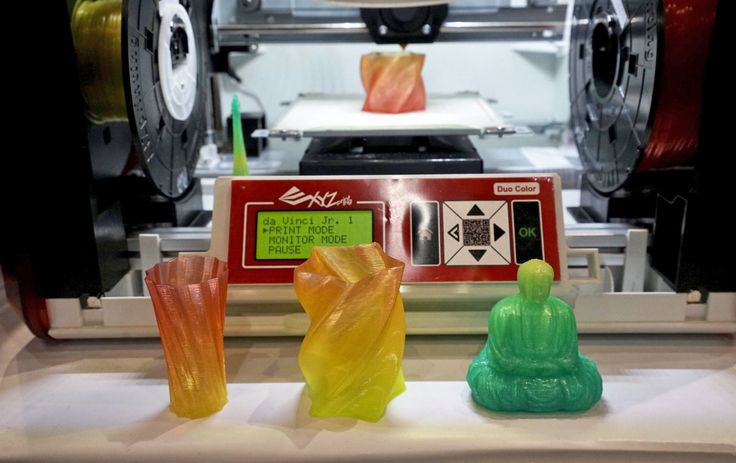 So far, it seems to be working!
So far, it seems to be working!
View all of Kerry Stevenson's posts.
Halo 3D Printer Named Best Innovation at CES 2018
News
CES 2018, an international consumer electronics show, is wrapping up in Las Vegas, and the organizers are starting to sum up the results. The prestigious award for "Best Innovation" in the 3D Printing category went to Indian startup Ethereal Machines with its Halo 5-axis hybrid 3D printer.
It is difficult to name a unique development of Bangalore engineers, because similar 3D printers are being developed by at least two other companies, but competitors offer industrial-grade devices, while Ethereal Machines relies on a relatively inexpensive desktop system. The idea is to combine FDM technology with a milling cutter. This is also nothing new, but unlike other desktop hybrid 3D printers, Halo uses a five-axis positioning system, similar to advanced industrial CNC machines.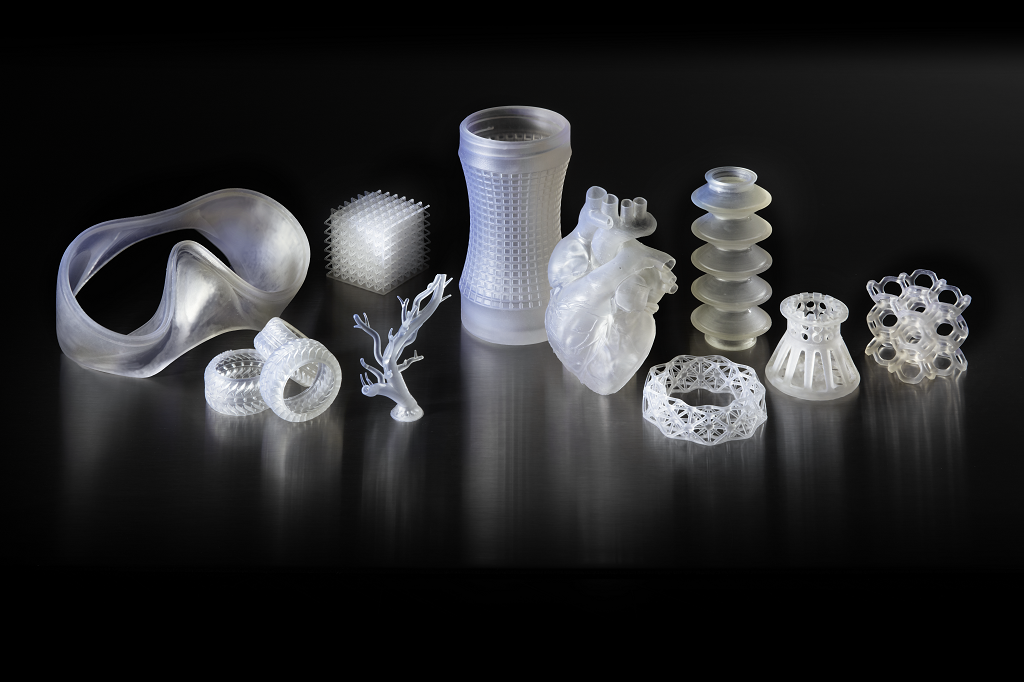
Like many conventional FDM-3D printers, the head moves in three axes, but the model is placed on a swivel and tilt platform, which allows printing in any direction, laying material on curved surfaces, dispense with support structures and increase the strength of products for by laying polymer threads overlapping. Replacing the print head with a milling head allows machining. The system is estimated at one and a half million rupees, that is, approximately $ 23,500. More information about the capabilities and technical characteristics of the Halo 3D printer can be found in the article at this link.
Do you have interesting news? Share your developments with us, and we will tell the whole world about them! We are waiting for your ideas at [email protected].
Follow author
Follow
Don't want
15
Article comments
More interesting articles
eleven
Follow author
Subscribe
Don't want
Simon Fraser University scientists have developed a self-learning system that matches in real time. ..
..
Read more
6
Subscribe to the author
Subscribe to the author
Don't want
The Salyut production complex of the United Engine Corporation is planning the next...
Read more
45
Subscribe to the author
Subscribe to the author
Don't want to
American startup Iro3D has shipped the first 3D printers for printing metal products using the selec...
Read more The Consumer Electronics Show was held in Las Vegas, Nevada from January 5th to 8th. At this exhibition, which is already more than four decades old, manufacturers presented technological innovations - potential bestsellers of the near future.
3D printing was not left out either - the exhibitors presented a lot of new things.
The 3D technology booth at CES is a great way to learn about the latest in 3D printing. Unfortunately, the industry leader, 3D Systems, did not take part in the show this year, but there were many other players, old and new, who showed their developments in 3D printing.
Ability 3D
Ability 3D promises hobbyists an affordable metal 3D printer.
This is not an ordinary 3D printer - in an effort to make 3D metal printing more accessible, a welding machine and a CNC milling machine were crossed in their Ability device. Each layer, during the printing process, is first deposited by welding, and then processed by a milling cutter.
In March, a KickStarter campaign starts to raise funds for the launch of the mass production of THE ABILITY3D-888, and in February, Ability is going to present to the public an internal combustion engine cylinder printed by their printer, which should work correctly in the engine, without serious post-print refinement. The guys from Ability see the price for their printer, already in serial production, somewhere around $3000.
We'll see.
Formlabs
A few years ago, Formlabs' Form, with its photopolymerization technology, was new to the consumer electronics market, but stereolithography is still something exotic enough for desktop models. FDM cannot compete with stereolithographic printers in print accuracy, while stereolithography has long been far inferior in the variety of materials used. As time goes on, manufacturers are trying to close this gap: this year, Formlabs introduced the Formlabs Form X Ceramic ceramic photopolymer, which, after printing, can be painted and fired like ordinary ceramic.
Rigid plastics have also been updated to be stronger than before, such as Formlabs Tough Resin, which mimics ABS in its mechanical properties.
In general, Formlabs is constantly expanding its line of polymers.
XYZ Printing
In order to print a color object with gradients, now you have to go to a 3D studio, which is quite expensive. Few people can afford a 3D printer capable of this. XYZ Printing is trying to change that with their new affordable Da Vinci Junior 2.0 Mix color 3D printer, which is suitable for home and hobby use.
XYZ Printing is trying to change that with their new affordable Da Vinci Junior 2.0 Mix color 3D printer, which is suitable for home and hobby use.
This printer can mix two filaments of different colors in one extruder, in any proportion.
The printer is currently limited to using only two colors, but the supplied software allows you to get any shade that is possible when they are mixed. Da Vinci Junior 2.0 Mix will find its satisfied user.
Da vinci Nano is another new model from XYZ Printing.
This is a compact modification of the Da Vinci Mini FDM 3D printer already known to everyone - the Nano workspace is a cube with a face of 11.9cm, against 14.9 cm of the Mini model. Its main “trick” is its compactness, but there is another advantage – a closed print chamber, the door of which protects the printout from drafts and dust.
CoLiDo
CoLiDo printers are interesting - these are inexpensive and not too complicated 3D printers, including delta bots, which are available in the DIY option - as a kit for self-assembly.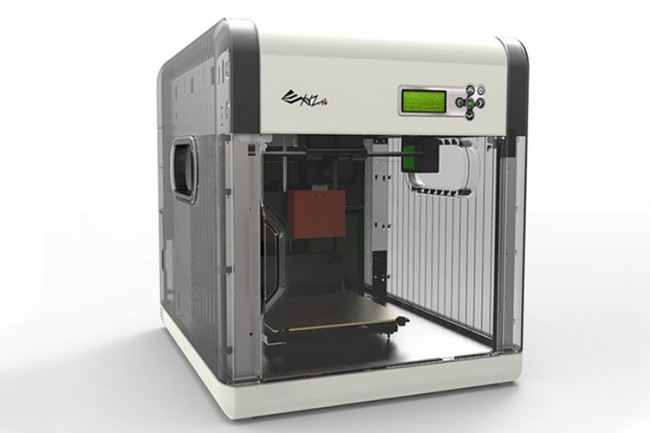 For example - CoLiDo Delta D1315.
For example - CoLiDo Delta D1315.
Due to their size, they can print quite large objects, while remaining relatively inexpensive and still providing more than acceptable quality. This is what is interesting.
The company plans to soon release a model for metal printing. It seems a little presumptuous, but - everything is possible - let's not run ahead of the engine and see what they can do.
3Doodler
The line of 3Doodler pens, the founder of this market segment, is not new to anyone, but you rarely see such neat and voluminous designs created with just a 3D pen. Apparently, a very skilled “drawer” was hired for the exhibition stand, which is not surprising - the company is trying to convince the public that 3D pens can be useful to artists, designers and people of other creative professions, and are not just an expensive children's toy. Not so long ago, following the laconic all-metal 3Doodler 2.0, the impressive and sophisticated 3Doodler Pro was released - a pen with a carbon body and convenient speed and temperature adjustment rings, designed to work with a wide range of materials.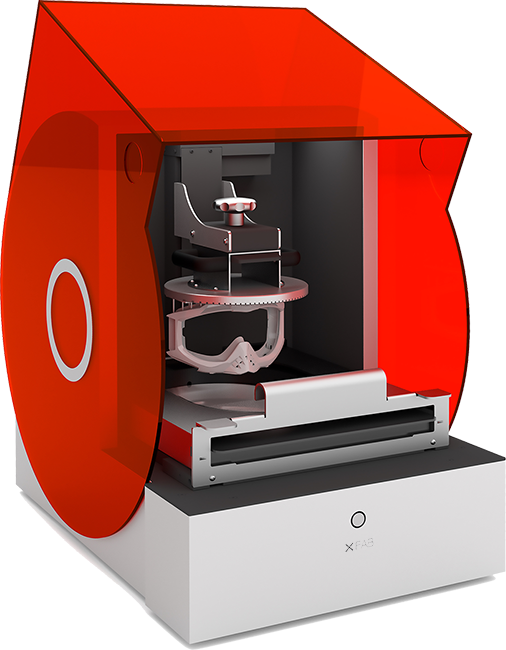
Titan Robotics
The most impressive printer at the show, but also one of the most productive, is The Cronus, a five-headed 3D printing monster from Titan Robotics Ltd. He uses Autodesk's advanced software, Project Escher, to work his five extruder robotic arms in a coordinated and accurate manner to print large enough objects.
The printer is set to go on sale this year, with a six-figure “on demand” price. The device can be used in factories and in online services that allow you to order 3D printouts via the network.
Cronus can use any standard 3D materials for printing, without restrictions on the manufacturer.
Markforged
Markforged, a leader in carbon fiber printing, unveiled its new industrial 3D printer at CES, the Metal X, which is designed to 3D print stainless steel.
It's much smaller and cheaper than 3D Systems' metal-printing monsters, and much easier to use than the optimistic Ability design.
DWS
DWS Lab introduces its X-FAB printer as “the first Hi End 3D printer at a consumer price”. This is a direct competitor to the Form 2 stereolithography printer. According to the manufacturer, its proprietary technology allows this printer to print a wide variety of materials, including hard and soft, transparent and opaque, ceramic, waxy and rubbery polymers.
This is a direct competitor to the Form 2 stereolithography printer. According to the manufacturer, its proprietary technology allows this printer to print a wide variety of materials, including hard and soft, transparent and opaque, ceramic, waxy and rubbery polymers.
DWS cites fast media changes with smart cartridges, no leaks, no manual handling of liquids, and no cost to replace the resin tray as the main advantages of its printer.
Sprintray
Sprintray unveiled its new Moonray S.
What's interesting: The design is based on a specially designed RayOne UV DLP projector that emits radiation with a wavelength of 405 nm.
Due to the design features, this projector gives a more accurate location of each point in the projection than conventional video projectors and laser SLA systems.
The manufacturer also emphasizes that the polymer trays in this printer do not require as frequent replacement as in other photopolymer devices.
“Say goodbye to consumable containers,” the manufacturer tells us and, of course, is a little disingenuous. Yes, the estimated resource of their trays is more than usual (stated - 50 liters of polymer), but not infinite. With the active use of the printer, of course, they will also have to be changed or serviced.
Yes, the estimated resource of their trays is more than usual (stated - 50 liters of polymer), but not infinite. With the active use of the printer, of course, they will also have to be changed or serviced.
Another feature of Moonray S is the presence of its own software that allows you to control several printers simultaneously via a wireless connection, as well as more rationally (with material savings of up to 30%) to build support.
In the photo: props generated by proprietary program RayWare versus props generated by MeshMixer.
Intamsys
Intamsys showed their FUNMAT HT.
FUNMAT HT is a PEEK thermopolymer printer.
PEEK is a polyetheretherketone and is a lightweight but very strong and strong thermoplastic. PEEK is increasingly being used in 3D printing as a number of key patents that have limited its use are now expiring.
The material is so good that the Californian company Spinal uses it to create elements used in spinal surgery.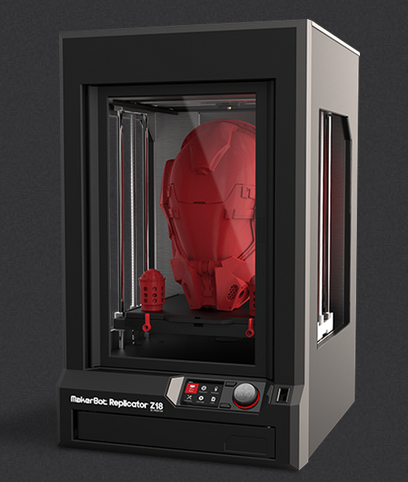
There are some pitfalls, of course: PEEK requires fairly high temperatures to print. Therefore, a special printer was needed for it. The printer from Intamsys has a nozzle that can reach temperatures in excess of 400°C. In addition to PEEK, this FDM device can also print with more traditional materials such as ABS.
SHINING 3D
SHINING 3D presented two interesting novelties at its booth.
The new model of the EinScan-Pro+ 3D scanner, an improved version of the well-known EinScan-Pro, and the brand new Einstart-C personal 3D printer.
Previously, it seemed a little strange that the Chinese comrades were so restrained and concise in the design of their equipment - Einscan scanners could be considered a model of industrial design. Well, the oddities are over, the oriental approach has shown itself and everything has fallen into place: the new EinScan-Pro + is presented in a glamorous champagne gold color.
Technically, of course, it didn't hurt him at all. As you might expect, the EinScan-Pro+ outperforms its predecessor.
As you might expect, the EinScan-Pro+ outperforms its predecessor.
As you can see from the promotional pictures, the scanning speed has increased by 7.6 times, and the capture area of each frame has increased by 1.6 times.
In addition, new software is shipped with the new scanner, the latest version of EinScan 2.0 Software.
Einstart-C is a new compact printer.
This is a small, enclosed, single extruder printer that prints PLA.
Printable models up to 15.24 cm in each axis. The printer has a safety mechanism that prevents printing when the door is open, but it can be disabled.
An interesting feature of the printer can be called a self-adjusting platform with a three-point level sensor - the printer automatically levels the platform before each print session.
With Einstart-C, we're seeing a trend toward ever friendlier and more affordable, if often less functional, consumer-grade 3D printers that don't require even the most basic engineering skills from the user.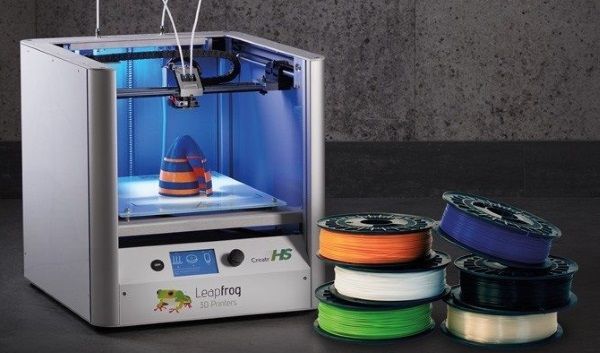
Well, a little offtopic: a couple of novelties not directly related to 3D printing that will leave few indifferent:
Qualcomm & ODG it is based on R-8 SMARTGLASSES and R-9 augmented reality glasses produced by ODG (Osterhout Design Group)SMARTGLASSES.
R-8:
While the processor has just gone into production and devices with it are not yet sold, it is difficult to say exactly their technical characteristics, but - according to the manufacturer, they are approximately the following:
Android-based system, eight-core mentioned above processor (four productive cores and four economical ones), stereo image resolution - 720p (per eye), with a viewing angle of more than 40 degrees, in the R-8 model and 1080p, with 50 degrees of view, in the R-9. The R-8 weighs 127.5 grams, which is against the 567-gram Microsoft HoloLens, for example. Also a lot, but much closer to a really applicable wearable device.
Smart glasses work with Vuforia, the most supported platform for AR app developers today (about 300,000 registered developers have created more than 35,000 compatible apps. ) Arrangements have been made with 21st Century Fox and other companies to release content .
) Arrangements have been made with 21st Century Fox and other companies to release content .
There is no reliable information from the manufacturer on power supply, but the R-7 model, which has been on sale since 2015, has two 650 milliamp / hour batteries on board. It seems obvious that in new models this will not be worse.
R-7:
What about prices? The R-9 is slated to sell for around $1,800 sometime in mid-2017, while the R-8 will be available sooner and for less than $1,000.
For comparison: R-7, with a picture similar to R-8, with a less productive processor and without 4G (which new models have), is now being sent for $2750. Not including shipping costs from the US, separately sold bluetooth keyboard for 93 dollars and a bluetooth manipulator.
In general, the prospects are not bad, but time will tell how it will turn out.
LEGO
LEGO Boost is a brand new line of LEGO bricks that let kids (and more) build their own robot, car, electronic pet and more, program them with their tablet and control them wirelessly.



